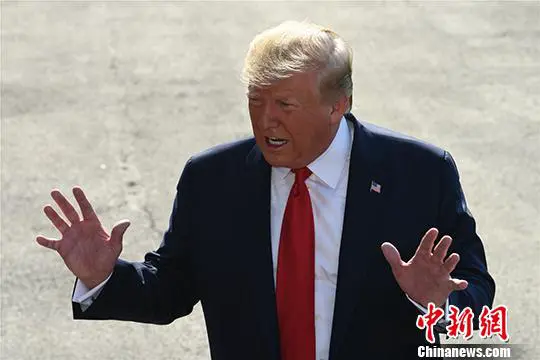By APD Writer Wang Peng
July 16th marked the 100 day since the beginning of US-China 100 Day Plan, which was set by Chinese President Xi Jinping and the US President Donald Trump at their last Mar-a-Lago meeting three months ago.
That meeting was just in time while the whole world is worrying about the deepening rivalry between the two superpowers.
Many western observers say, the Thucydides trap will bring the upcoming hegemonic war to them, the anxious established hegemon and the malcontent rising power.
However, the game did not play in accordance with these corny scenarios. The so-called “US-China 100 Day Plan” perhaps is the biggest surprise brought by Xi and Trump to the whole world.
In early April, as US Commerce Secretary Wilbur Ross said, both sides have made the plan on trade “far more complex and far more deep-rooted”, following a breakthrough in discussions between the two Presidents. Both of them regarded this plan as the “most significant development from two days of talks” and “a very very important symbolization of the growing rapport between the two countries”. Later, US Secretary of State Rex Tillerson and President Trump himself confirmed this.
Thus, the widely “expected” or “worried“ trade war or hegemonic war between the two giants has been covered by cheering and laughing. Thank goodness, the agreements have been signed.
Almost three months passed. Now, it is time to review the achievements and remaining problems of the Plan.
How does it work? Are there any obstacles that need more attentions and efforts from both sides?
Just a few days ago, as Xinhua News Agency reported, China has increased the import of agricultural products from the USA.
More than 20 Chinese and US companies signed purchase agreements that worth more than 5 billion US dollars. It means China will buy 12.53 million tons of soy beans and 371 tons of pork and beef from America.
At the same time, China also agreed to lift its restrictions on US beef by June 16 as one of the first stages of the Plan, which was initially banned by the Chinese government in 2003 due to the “mad cow disease”. Undoubtedly, it is really a big sum of money. That is why Trump was so satisfied with this and proud of “his great contributions” to American farmers.
Not only Trump, but also local officials and citizens are exciting about the opening of Chinese market, which are ‘boundlessly profitable’ as the local media described in an exaggerate way.
‘Now China eventually opens its beef market in the US. This is absolutely exciting news for us!’ said Adam Greg, the vice governor of Iowa State, with undisguised joy. What is more, the new governor of Iowa, Kim Reynolds will visit China next week with a delegation on farm products trade.
In addition to agriculture and farm products, that Plan also serves as the Gospels to American energy enterprises, especially for U.S. LNG exports.
According to the Plan, the US-China LNG cooperation my offer U.S. tens of thousands jobs through infrastructure projects.
The U.S. Commerce Secretary has clarified the U.S. position that LNG exports are a path to the U.S.-China trade balance; and China promised to welcome both American state and private sector investors.
Herein lies an opportunity for U.S.-China trade relations, as well as the strategic accommodations and mutual trust buildings.
Despite of all those great achievements that both China and America achieved, however, we still have to notice that, while America runs a massive trade export of high technology with the world, the country has signed billion-dollar contracts with Japan, Europe, Qatar, Australia, Israel, India, and so forth; the “China absence” are still neglected.
A funny joke was widely spread in China that “we buy one plane from America at the cost of selling them one billion pairs of socks.”
Therefore, in the long run, perhaps the most effective and sustainable approach for President Trump is to ‘balance the unbalanced US-China trade’, instead of forcing or persuading China to open more markets.
He should remove Beijing from the outdated list of blockade on techniques ever since 1989. Now, a new time has come.
Dr. Wang Peng, Research Fellow at the Charhar Institute and Lecturer at the China Institute of Fudan University.
(ASIA PACIFIC DAILY)
 简体中文
简体中文

